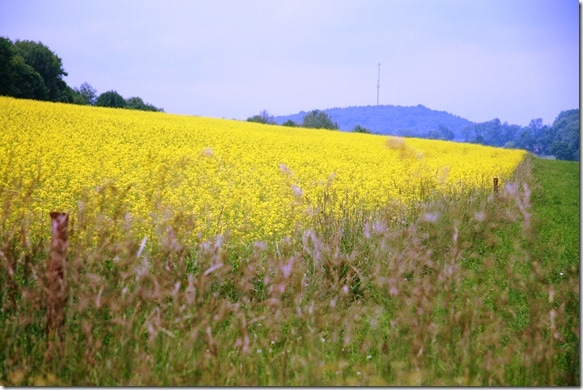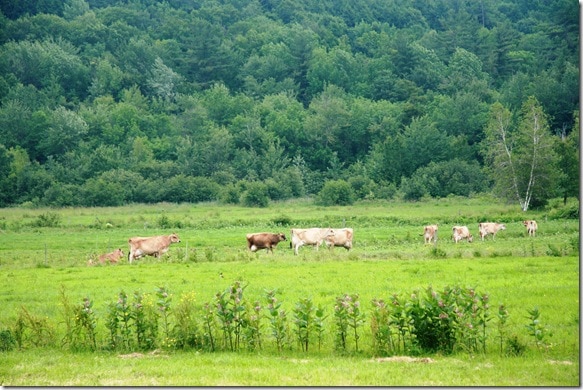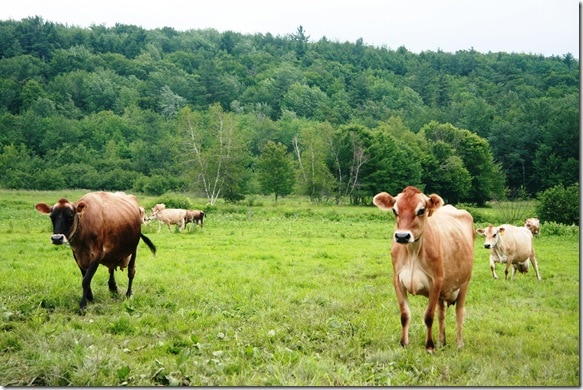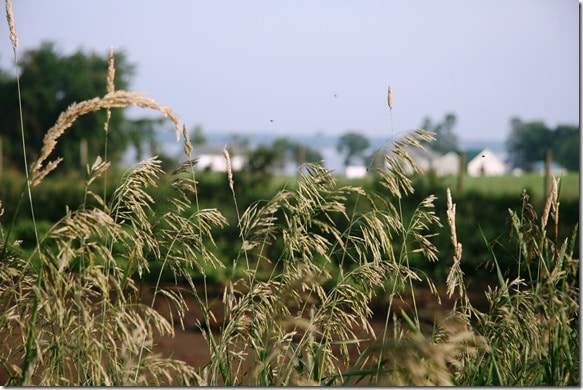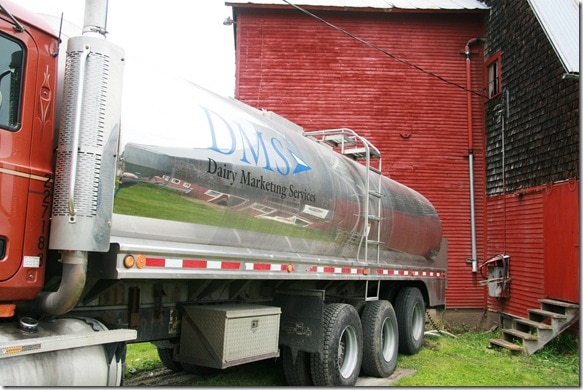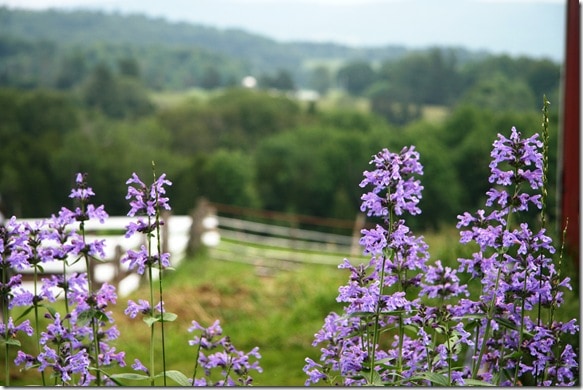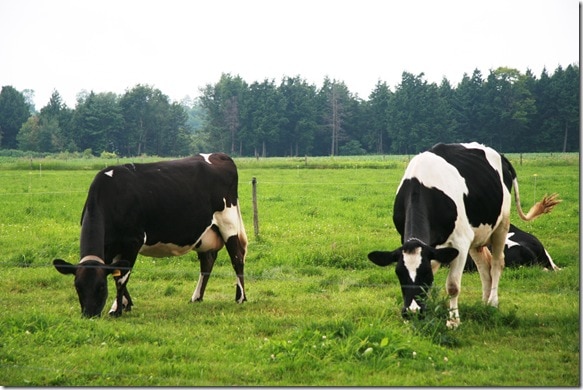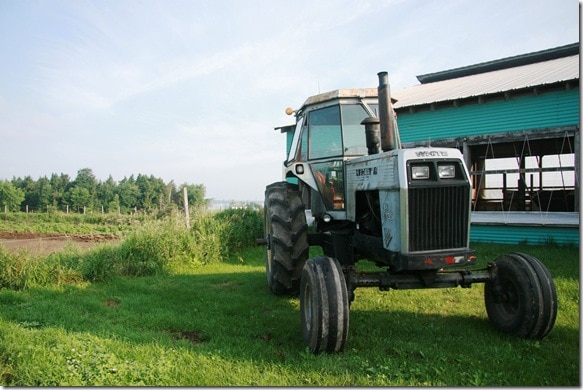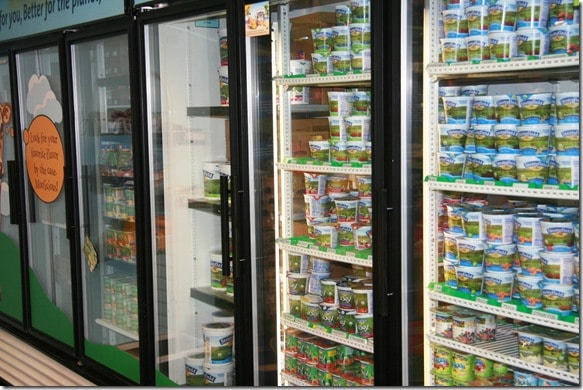Thank you to everyone who submitted questions for Stonyfield and the farmers I met on the Stonyfield Blogger Barnstorming Tour this past weekend!
I think one of the coolest things about the trip was really getting to know the farmers themselves. It was great to hear firsthand why they farm organically, how it affects the cows and their businesses, and more. On Saturday night, as I mentioned, we actually had 3 of the farmers and their families over to dinner at the inn where we were staying in Vermont!

It was really interesting get the answers to questions that you all asked and I’ve been wondering about, as well. If you have any follow up questions, please let me know!
Organic Q&A
1. How much does it cost the farmers to have the USDA certify them as organic?
The USDA has about 100 accredited certification groups around the world that certify their local area farms. It varies slightly by certifier and is based on gross sales. For the Vermont Organic Farmers (VOF), if you sell less than $2,500 per year it costs $300, and the pricing increases all the way up to $10 million worth in sales, for which you are charged $4,000 per year. The whole chain has to be certified — both the farms and the handlers (e.g. Stonyfield).
2. What are the specific requirements for being certified organic?
There are a number of strict requirements for being certified organic, but here are some of the biggies:
- Absolutely no use of prohibited materials: antibiotics, growth hormones, etc.
- Your land must have been free of prohibited materials for at least 3 years.
- The cows must have been managed organically for at least 1 year. This means 100% organic feed, and no prohibited materials.
- Cows have to be at pasture for a minimum of 120 days per year, and get at least 30% of their DMI (dry matter intake) from grass.
- Cows must be given daily access to the outdoors during the non-grazing season. This includes shade, shelter, fresh air, direct sunlight, and exercise areas. (Temporary confinement is allowed, but only when absolutely necessary — e.g. they are about to give birth)
- Animals must have clean, dry bedding.
- Manure must be managed properly and not contaminate soil or water.
3. What exactly does the cow’s diet consist of, both organic and non-organic?
It differs slightly regionally, but in general in the summer, an organic cow’s diet consists of grass and a little bit of grain (corn, barley, etc. — about 5 lbs., if that). In the winter, they eat stored forage: either haylage (chopped, fermented hay), or round bales of hay (longer-stemmed), plus grain (anywhere from 5-15 lbs. per day per cow). However, some of the farmers we met this weekend feed their cows only grass/hay.
A conventional diet, on the other hand, would consist of corn silage (chopped, fermented corn) and grain (corn and soy). Some haylage may also be mixed in, but the cows are not out on grass.
4. How does Stonyfield incorporate sustainability into transportation of their products?
Stonyfield currently has 9 different teams working on sustainability issues, one of which is the transportation team. (More details are on their website under “Health Planet” and “Our Road Map”.) In 2007-2009, they were able to reduce their greenhouse gas emissions associated with product distribution by 40%! Honestly, though, transportation is a small percentage of the carbon footprint of a product compared to how it is produced. Therefore, knowing about the product and how it was produced is very important — organic is key! If you go to a farmers market or buy locally, get to know your farmers and ask about their sustainability efforts related to production.
5. I heard that as one of the rules of growing crops organically, farmers have to use organic pesticides which can actually be MORE harmful to people than regular synthetic kinds because they use organophosphates.
Actually — this is the complete opposite of what’s true — organophosphates are what is prohibited in organics! Normal pesticides are what contain organophosphates. With organic farming, farmers are encouraged to farm in a way that does not need ANY pesticides — they rotate crops to help discourage the same pests, they use beneficial insects (e.g. release ladybugs to eat bugs), they utilize companion planting, etc. There are some organic pesticides that are allowed, for example pyrethrem (? made from a plant – ), but in order to get on the allowed list of pesticides it has to be proven that it is not toxic to humans or animals and will not harm or persist in the environment.
6. What happens to the cows when they are no longer milkable?
Unfortunately, these farms are businesses, so when cows are no longer milkable they will be butchered for meat. In the U.S., about 48% of hamburger comes from former dairy cows. I asked the farmers whether it was hard to say goodbye to the cows they had raised, named, etc., and they said yes, it definitely made them sad, but they just have to remind themselves that it’s something they have to do to make a living and all part of the circle of life.
7. How can I support organic farming?
Buy organic products! The farmers need a stable market so this is VERY important to them. If your grocery store doesn’t carry organic versions of products, ask for them.
8. Why isn’t Stonyfield offered in my grocery store?
It just comes down to consumers asking for it! Talk to the store manager — often they will be willing to accommodate requests.
Stay tuned — I’ll be answering more of your questions when talking about each of the specific farms, including:
- Why each of the farmers decided to go organic
- How much milk comes from a cow during one milking session
- How long it takes from when the cows are milked until the yogurt appears in your store
And, by popular demand…
…click here for the recipe for the Baked Stuffed Baby Bella Mushrooms that we were served at the Tabor House Inn on Saturday night!
(Sidenote: if you love stuffed mushrooms, check out my Stuffed Portobello Mushroom recipe — it’s awesome and a great vegetarian entree!)



